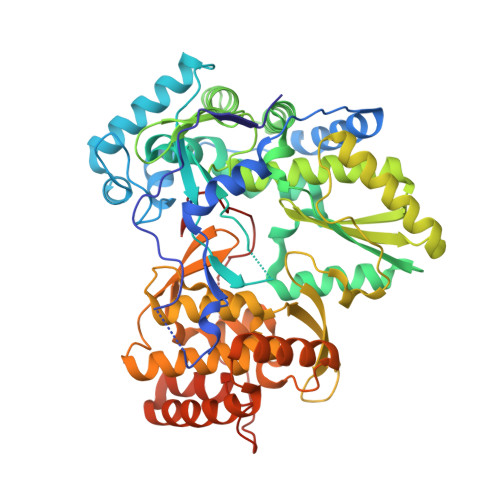A ligand-observed mass spectrometry approach integrated into the fragment based lead discovery pipeline
Chen, X., Qin, S., Chen, S., Li, J., Li, L., Wang, Z., Wang, Q., Lin, J., Yang, C., Shui, W.(2015) Sci Rep 5: 8361-8361
- PubMed: 25666181
- DOI: https://doi.org/10.1038/srep08361
- Primary Citation of Related Structures:
4TXS, 4TY8, 4TY9, 4TYA, 4TYB - PubMed Abstract:
In fragment-based lead discovery (FBLD), a cascade combining multiple orthogonal technologies is required for reliable detection and characterization of fragment binding to the target. Given the limitations of the mainstream screening techniques, we presented a ligand-observed mass spectrometry approach to expand the toolkits and increase the flexibility of building a FBLD pipeline especially for tough targets. In this study, this approach was integrated into a FBLD program targeting the HCV RNA polymerase NS5B. Our ligand-observed mass spectrometry analysis resulted in the discovery of 10 hits from a 384-member fragment library through two independent screens of complex cocktails and a follow-up validation assay. Moreover, this MS-based approach enabled quantitative measurement of weak binding affinities of fragments which was in general consistent with SPR analysis. Five out of the ten hits were then successfully translated to X-ray structures of fragment-bound complexes to lay a foundation for structure-based inhibitor design. With distinctive strengths in terms of high capacity and speed, minimal method development, easy sample preparation, low material consumption and quantitative capability, this MS-based assay is anticipated to be a valuable addition to the repertoire of current fragment screening techniques.
Organizational Affiliation:
1] College of Life Sciences, Nankai University, Tianjin 300071, China [2] High-throughput Molecular Drug Discovery Center, Tianjin Joint Academy of Biotechnology and Medicine, Tianjin 300457, China.
















